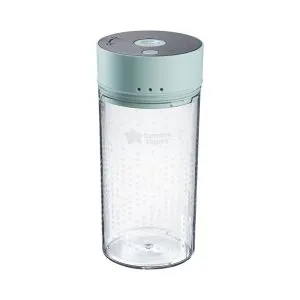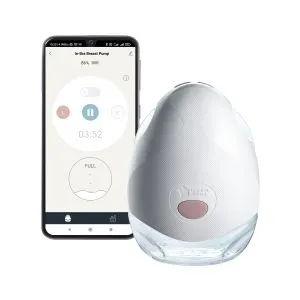Expecting a baby? Congrats! Setting up the perfect nursery is really exciting, but it can also feel a bit overwhelming. It's where your baby will sleep, play, and grow, so you want it to be both beautiful and practical.
While your baby should sleep in the same room as you for the first six months, it's perfectly fine to prepare their own bedroom in advance.
We've put together this post to help you design a dreamy and functional nursery, and share some handy tips and tricks to make the whole process as simple as possible.
What do you need in a baby’s nursery?
Your baby’s nursery should be safe, comfortable, and functional. Here's a breakdown of the essentials:
Sleeping
- Cot or Moses basket: A safe place for your baby to sleep. Make sure it meets current safety standards.
- Mattress: A firm, flat mattress that fits snugly in the cot or Moses basket.
- Mattress protector and fitted sheets: To keep baby’s mattress clean and hygienic.
- Swaddles or sleep bags: Tommee Tippee baby sleepbags are designed to keep them safe, secure and calm. So they sleep better, and you do too. Our swaddles and sleepbags are crafted for comfort and safer sleep, without the need for loose covers.
Nursery storage
- Dresser: For storing clothes and other baby essentials.
- Shelves, boxes or baskets: To keep toys, books, and other items organised.
Feeding
- Rocking chair: A comfortable place for you to breast or bottle feed, and soothe your baby.
- Nursing pillow: Provides support for you and your baby when you’re feeding them.
- Muslin cloths: Essential for cleaning up spills, dribble and spit-up.
Nappy changing
- Changing table or pad: A designated space for nappy changes.
- Nappy bin: To dispose of dirty nappies. Our Twist & Click nappy bins offer guaranteed protection against odours and germs*, and mean less mess, and fewer trips to the outside bin.
- Nappies, wipes, and nappy rash cream: All the necessary supplies for smoother nappy changes, day and night.
*T&C bin individually twists and wraps each nappy, locking away odours and germs. Antibacterial protection is present in the film and not the other components of this product. Film is treated with Biomaster silver biocide tested to ISO 22196-2011. Please use biocides responsibly.
Other essentials for baby’s bedroom
- Baby monitor: To keep an eye (and ear) on your baby when you're not in the room.
- Nightlight: Helps to provide comforting reassurance and also acts as a soft light for nighttime feeds and nappy changes.
- Sound machine: Can help soothe your baby to sleep with white noise or other calming sounds.
- Cot mobile: Can provide visual stimulation for your baby.
- Play mat: A soft surface for your baby to practice tummy time and play on.
- Decorations: To personalise the nursery and make it feel cosy.
- A day bed: Perfect for you to nap when baby naps during the day, and practical if you ever need to sleep in baby’s room with them during the night. The nursery should also be a comfortable space for you, as you'll be spending a lot of time there.










